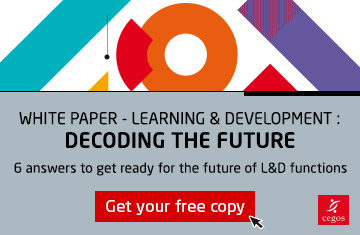5 tips to improve learner experience
A few years ago, a learner would enrol in a training session and spend two days in a room with a trainer and their peers. They would then go back to work and try to apply what they had learned.
We are currently witnessing the development of much richer tools.With an enlarged range of relational and numerical interactions: learners can use their smartphones in the classroom. They can take part in digital activities upstream or downstream. They can exchange with others in a peer learning approach etc.
The idea seems good, but what appears to be educationally relevant and simple. For the designer may sometimes seem complicated from the learner’s point of view.
In the digital era, the question "Is the teaching method suitable?" is no longer sufficient. It is essential to put oneself "in the shoes" of the learner , locate possible irritants and seek to eliminate them!

To do so, we recommend this 5-step approach:
1 - Step "into the learner's shoes"
Create Personas. A Persona is a typical user or fictitious representation of the target users of a solution. It can be used to set priorities, guide design and ergonomic decisions, and test priority scenarios.
2 - Move from knowledge acquisition to transfer
The learning time frame must be thought of from the learner’s point of view: no longer in terms of 2-day events, but stretched over a longer period which encompasses the time registering on the tool, learning, repetition of skills and anchoring for the long-term.
3 - Move from the educational staircase to emotional scenarios
Learners generally assess their training experience on an emotional peak felt during and at the end of the process. It is therefore essential that the last stage of a training course be exciting!
If, as a general rule, we make sure that the introduction to a tool is appealing, the final stage of the training course should not be the “end of the training session”, but, should be for example, the moment when the learner is congratulated for having applied the acquired knowledge!
4 - Improve the experience: simplify learner interactions with all digital interfaces
Learning and adopting a new practice requires effort. Access to training must therefore require as little effort as possible!
Interfaces designed by UX experts streamline navigation: removing extra mouse clicks, single sign-on, harmonisation of notifications, customisation of the interface by the user themselves based on their needs and access for multiple devices, many areas of friction can be avoided.
5 - "Make it happen" with experience ambassadors
"Keeping the initial promise" means ensuring the project is implemented properly.
This requires fine tuning of the digital interfaces and supporting people who will join in the experience with learners (trainers, managers, peers). Based on the employee-customer profit chain theory, it may be relevant to train these stakeholders in the same way as the learners.
The current challenge for L&D function is no longer to simply design a relevant tool. To engage learners, we need to ask whether it captivates (generates positive emotions) and simplifies the experience (minimises effort to access the tool).
Read the Cegos Innovation Book “L&D: decoding the future”, and find out more about the new challenges for Learning & Development leaders.









